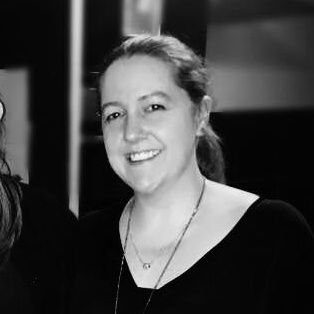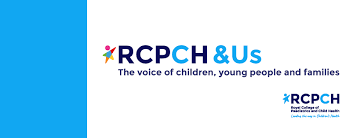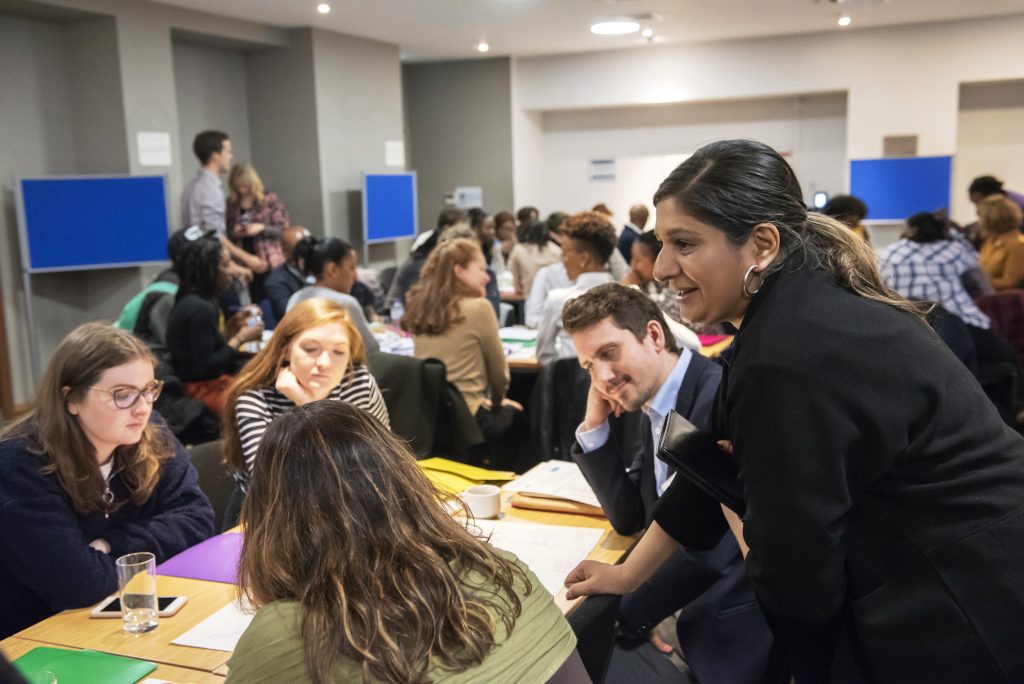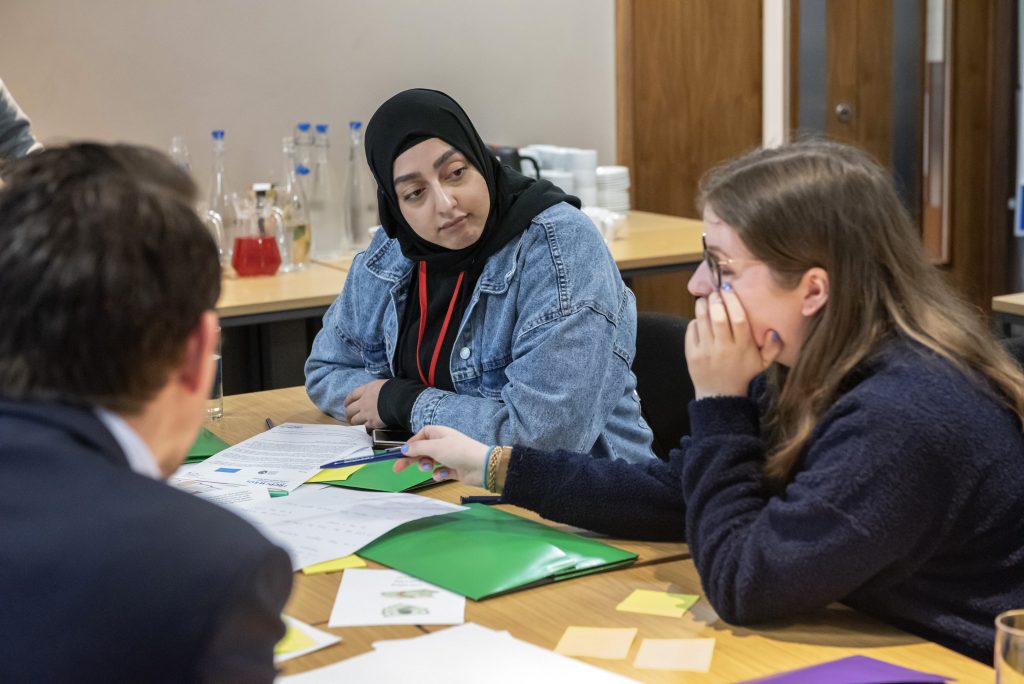
We were very excited to meet with Emma Sparrow from The Royal College of Paediatrics and Child Health. Read on for Part 1 of 2 blog posts that cover all things engagement, involvement, and PPI…
We began by asking Emma to explain her role, and how she and her team approach child health and engagement.
Part 1: How do we engage with children and young people and amplify their voices?
Improving child health is more than just paediatrics
Emma: The Royal College of Paediatrics and Child Health (RCPCH) is a charity, but as a Medical Royal College, it helps to support the specialism of Paediatrics. We’re slightly different to other Royal Colleges because we are the Royal College of Paediatrics and Child Health, rather than the Royal College of paediatricians. So it means we can get involved in the whole child health agenda, which is obviously much bigger than just paediatrics. The RCPCH &Us programme is the network for children, young people and families to help inform and influence all of the work of the College. It gives them a place to have their voice and space to say what’s going on for them and what could be done to improve child health services. Our approach is to get them involved in that – it’s not just somewhere to chat, it’s somewhere to actually get involved in and progress social action. For us it’s like a network approach where we try to get as many children and young people and families involved across the whole of the UK at all ages. This year, our youngest person involved is aged four, and we go up to age 25.
We focus on children and young people’s voice and having them involved as volunteers or project members or giving views, but we also recognise that sometimes we will need to involve their advocates as well, whether that’s parents or carers. So we do ad-hoc work with parents and carers, but our primary focus is making sure that children and young people can get involved in the work the college is doing. We also ask what might be some of the challenges in child health, that they’re keen to explore and do something about with us?

People ask what children and young people think about something… We turn the questions into games and activities and take them out on the road
Emma: Our approach is a bit different to most places. At RCPCH &Us, we work in three different workstreams. One is our roadshows and consultations. We get questions from loads of different people about what do children and young people think about something – for example at the moment I’ve got questions on what do young people think about virtual health appointments, and what do children young people think about mental health experiences? What do children and young people think about how their data is used? There’s lots of different questions that come into us. We’ll turn these questions into a set of games and activities and take them out on the road, so that we can go and speak to as many children and young people as possible in as many different areas as possible, with as many different experiences as possible. It’s about us being out there with them, rather than expecting them to fill out a survey or a questionnaire or attend something with people that they don’t know. Our roadshows might operate through schools or youth centers or playgroups or outreach. Or we might speak to children in care groups and carers, or speak to children and young people who are patients: we’ll speak to them outside their outpatient appointments, when they wait to see their clinician, or they might be inpatients.
We bring young people together for day-long ‘challenges’ or for long-term projects
The next approach is challenges. These are ‘tasters’, because children and young people don’t necessarily want to sign away their lives to a project for three years, they might want to just see what it’s like. We’ll bring them together for a project day, where they’ll come in not really knowing that much, and then learn all about a topic, they work with data, and come up with solutions and then present it at the end of the day. This is a bit like the project that we did with you at LSHTM last year – This Sickle Cell Life.
The final approach for us is long term projects focusing on a specific area, with children and young people signing up to join that project team.

Children and young people can participate in a way that works for them
Across our approaches, you could be a young person or child that just wants to tell us something in a conversation, that’s perfect. Or maybe you want to try something you want to do a challenge or maybe you want to do a project, but you don’t need to do all three; children and young people can come in and out as it fits for them. We really want to make it an opportunity for them that they feel is meaningful, and that fits their life rather than fits my nine-to-five work life. It includes lots of weekends and evenings, and lots of doing things in lots of different ways. But for us, that’s important because it means that we get more children and young people involved who might not have been involved before, across different ages and backgrounds.
The other bit that is different is the way that we approach diversity. So we also make sure that any project we’re doing has children and people from three different groups. One is universal, so they’re all just children or young people, because that’s who they are. Then we have a group where they’ve got specific experiences that might change the dynamic for them, for example they’re young carers, or they’re Gypsy travelers, or something that binds them together with an identity. The third group is specialists, who have the health condition, for example asthma. That explains the way that we try to deliver our work by bringing together all three groups to have a full set of views, ideas and experiences.
How do adults respond to your approach, and the way you centre children and young people?
You’ve always got people that are your allies and they’re brilliant for amplifying what’s going on. You can send them something and explain it to them and you know they’re going to get it straightaway and get it out. And then you’ve got the middle group who know that it’s important, but maybe feel stretched – overwhelmed by their work or their role. But when you can engage them in a conversation with an adult, or an organisation or a particular group of people you can see that they get it and they want to do more, but maybe the time is just not right. Those ones stay in touch, and they will get there. Then you have the people that just don’t get it at all. Either they fundamentally don’t want to get it, because they don’t think it should be happening – you’ll have people saying, ‘but why, it’s not [children and young people’s] role to say that we know what we’re doing’. Or they don’t get it because actually they’re at a point of crisis themselves, maybe in their role or their organization where it’s entirely the wrong time.
We just have to really understand that we’re going to have all of those groups, and they’re all important. They all have a role to play in what we’re doing, but the way we approach them will need to be different. So the information we give to allies and the people that ‘get’ it is what children and young people have said, and can you do something with it? Yes. The middle group, we see how we can show them the benefits of what children and young people are saying and then how it will actually support their work. For the ones that fundamentally don’t get it, we tend to talk about the legislation: there’s a statutory duty to do this, it isn’t something that I’ve just made up. It’s really important when you do engagement work that you’re aware that everybody has a different motivation as to how it will land with them, and why they might be interested. But you can learn from them and work to give them what they need. Sometimes it’s challenging but I just see it as an opportunity to share information in a different way. I have to just try harder to make sure that that it meets what they need.
I think you have to be an eternal optimist in engagement work, because everyone’s different, everyone learns in a different way, everyone participates in a different way. It’s all part of a process.

Thanks for your time Emma. Look out for Part 2 of this Q&A next month!
Contacts
To find out more about the RCPCH &Us programme or to access their free resources and support go to www.rcpch.ac.uk/and_us or contact and_us@rcpch.ac.uk and follow them on Twitter @RCPCH_and_Us.
You can read about the RCPCH & Us collaboration with LSHTM on ‘This Sickle Cell Life’ here.
